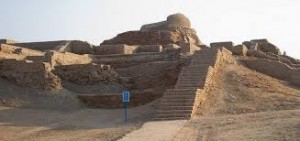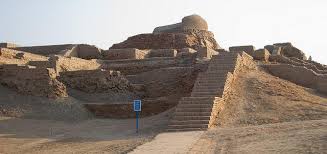
(Credit: Smithsonian.org)
The rise and decline of the Indus Valley Civilisation has always been a mystery. Various archaeologists and anthropologists have tried to unfold this mystery through different theories. This question was recently answered in the scientific weekly, ‘Nature’, in its edition of the first week of March.
The article says that a 200-year drought doomed the Indus Valley Civilisation. palaeoclimatologist, Yama Dixit, at Cambridge University and her colleagues examined sediments from Kotla Dahar, an ancient lake near the northeastern edge of the Indus Valley area in Haryana, India, that still seasonally floods.
The researchers suggest that the monsoon cycle, which is vital to the livelihoods of all of South Asia, essentially stopped here for as long as two centuries. The decline of civilisations in Egypt, Greece and Mesopotamia has already been attributed to a long-term drought that began around 4200 years ago.
The Indus civilisation, according to archaeological research accounts, was characterised by large, well-planned cities with advanced municipal sanitation systems and a script that has never been deciphered. However, it slowly lost urban cohesion, and its cities were gradually abandoned. Archaeologists and historians, over the generations, have been laying out various assumptions that led to its decline.
Research on the Indus civilisation, has always been an ignored area in our part of the world. However, in his early tenure, Zulifkar Ali Bhutto took some solid efforts that laid to the foundation of its international recognition. This was pioneered with an international seminar – Sindh through Centuries – held in 1975, where researchers and scholars revealed various aspects.
After four decades, the Sindh Madresatul Islam University held another, second International Sindh through Centuries conference on March 24-26 this year and tried to reconnect the past with the present through latest research on the origin and decline of the Indus civilisation, including deciphering its script.
Termed as one of the largest and oldest urban settlements in the world, the headquarters of the Indus Civilisation – Mohenjodaro – is one of the 981 world heritage sites declared so by the Unesco in 1980. Reportedly, this famous world heritage site is fast deteriorating.
Mohenjodaro has been in the headlines recently. Two months ago, it was in the spotlight when PPP Chairman Bilawal Bhutto inaugurated the Sindh Festival on February 1 within its premises. Experts had already warned that the inaugural ceremony would add more danger to this fast deteriorating site. The personal involvement of Bilawal Bhutto, attracting national and international tourists, is a positive sign, which needs to be harnessed into.
The media has been reporting that some walls are crumbling and others fast decaying due to rain, dust storms and water logging. The condition of the laboratory, museum, motel and other facilities, reportedly, is also very poor. More depressingly, a few years back, even the Mohenjodaro museum was looted. Many of its famous seals remain unrecovered, except ceremonial police reporting and questionable raids on the possible hideouts of stolen treasures – largely believed to be smuggled offshore.
In the aftermath of the 18th Amendment, the custodian of the site is its provincial government. With this, it reportedly received an amount of Rs75 million from the federal government under the National Fund for Mohenjodaro. The fund, during the last four decades, is told to have generated a huge sum of $23 million, mainly through an international campaign jointly run by the federal government and Unesco. The Sindh chief minister, reportedly, also contributed Rs100 million to the fund.
With the takeover of this world heritage site, the government of Sindh has revised the technical committee – an apex body, to preserve and promote the dying site, under the Ministry of Culture. The much-acclaimed authority on the Indus Valley Civilisation German archeologist Dr Michael Jansen has been made its chairperson. Under his guidance, reportedly, new project preparations are told to be in process, for the second master plan, estimating at least Rs1000 million, which needs intensive deliberations with all concerned stakeholders.
Besides money, Mohenjodaro also needs a strong team of professional researchers, trained staff and skilled labour.
The newly envisaged Mohenjodaro master plan can definitely result in better protection of the site, if merit and expertise is not compromised. Provincial interdepartmental coordination is urged to attract more tourists. For this, it needs a dedicated website, promotional literature, incentivised packages, economised travel, and most of all security and safety. This is how, besides preservation and promotion, we may create a qualitative environment, where holistic research on the rise and fall of the Indus civilisation can also be undertaken at our own level, as per international standards.
The writer is an anthropologist and development professional.


2 Replies to “Persistent Drought led to Decline of the Indus Valley Civilization
Mohenjo daro’s new master plan may shed more light”